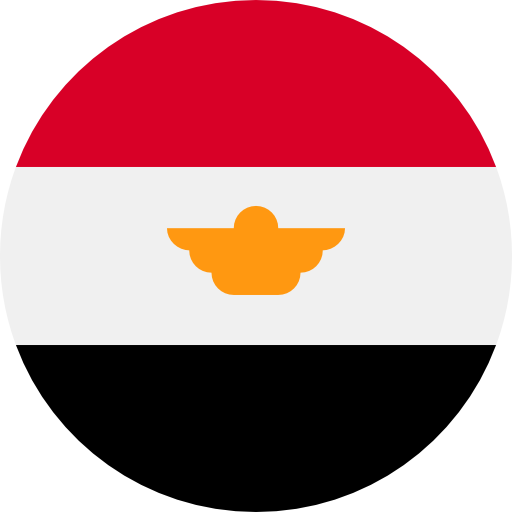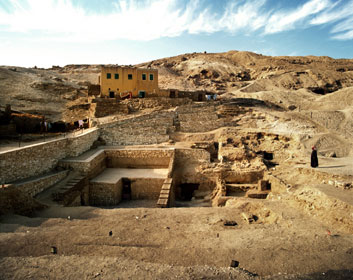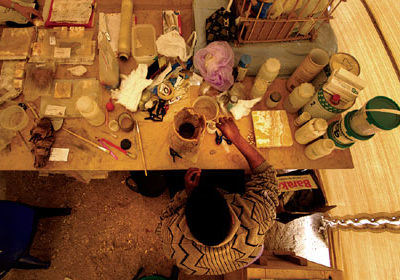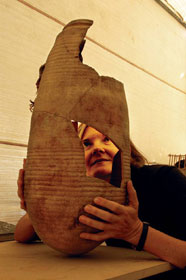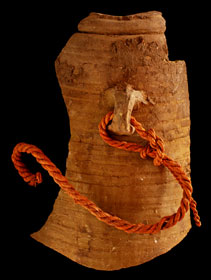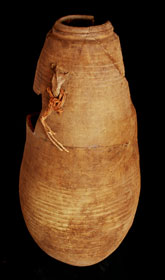Report Campaign 2004
3 rd Season Report January 13 th – February 19 th 2004
Field Director: Dr. José M. Galán
Co-Director: Mohamed A. El-Bialy
General Director of Antiquities in Luxor and Upper Egypt: Dr. Holeil Ghaly
General Director of Antiquities in the West Bank: Ali El-Asfar
Field Inspector: Ramadan Ahmed Ali
Rais:Ali Farouk
Members of the Spanish team:
- José M. Serrano
- Ana de Diego
- Oscar López
- Alicia Torija
- Gemma Menéndez
- Margarita Conde
- Francisco Borrego
- Mª José López Grande (ceramóloga)
- Luis Priego (restaurador)
- Montserrat Cruz (restauradora)
- Isabel Izquierdo (entomóloga)
- Carolina Martín (entomóloga)
- Juan Ivars (arquitecto)
- Carlos Cabrera (arquitecto)
- Carlos Spottorno (fotógrafo)
- Salima Ikram (experta en momias)
ACKNOWLEDGEMENTS
The Egyptian Supreme Council of Antiquities in Cairo has been very supportive, and we are most grateful to its Secretary General, Dr. Zahi Hawass, and to Magdy El-Gandour, General Director of Foreign and Egyptian Missions Affairs. In Luxor, the Antiquities Service has always been ready to help, and our gratitude goes to Dr. Holeil Ghaly, Head of Luxor and Upper Egypt Antiquities, and to Ali El-Asfar, Director of the Antiquities Department in the West Bank.
It is necessary to mention that our inspector for this season, Ramadan Ahmed Ali, has been extremely kind with us, always willing to help and cooperate in every way. He has been very efficient and diligent in his duties, and we had considered ourselves lucky to have him working with us.
Rais Ali Farouk, has been a very important pillar for the success of our work. He organizes the workmen perfectly well, and always has in mind the timetable. He has a great sensibility for archaeology, and for the conservation of the objects found and the structures unearthed. He gathers all the qualities that a good rais must have.
We have employed around eighty workmen. They have worked very hard and with great care, and we are more than satisfied with their job.
ARCHAECOLOGICAL WORK OUTSIDE THE TOMBS
The tombs of Djehuty and Hery are located at the foot of the rock hill of Dra Abu el-Naga north. The slope is very steep, and so is the mound that has accumulated in front of the entrances to the tombs. Thus, the difficulty of clearing the open courtyards is due to the fact that we are working inside a depression.
This season we have concentrated our work outside, on the open courtyards. As in previous seasons, we have divided the site in square grids, and we have used an integrated topographical station to locate all the finds horizontally and vertically.
The aim of excavating the mound in front of the tombs is to find out the dimensions of the courtyards, and if they had a wall and a small pylon at the entrance. In this sector, the most relevant finds consist of several relief fragments coming from inside the tombs of Hery and Djehuty. They were probably thrown outside by robbers, or as a result of the Marquis of Northampton’s quick excavation in the area, back in 1898-99. These fragments will be very important for us when we start restoring the walls inside the tombs.
We have started clearing the open courtyard of Hery’s tomb, and now the entrance is visible from outside.
A second group of workmen has been involved in clearing the area above the tombs, slightly higher up the hill. The aim of the work here was to facilitate the excavation of the base of the early XVIIIth Dynasty private pyramid that we found last season above the entrance to Hery’s tomb. In the Saite Period, once the pyramid had collapsed, a pit for a mummification deposit was cut into the gebel that once formed the pyramid’s core. Inside it, we found big jars containing linen bandages, and ropes still hanging from their handles.
Clearing the northern wall of the pyramid, the entrance to another tomb is now quite visible. This tomb is connected from inside with that of Hery, a circumstance that can be of great help in the future, when we start removing the debris that now fill Hery’s inner most chamber. Near its entrance, we discovered some stamped mud-bricks with the impression still legible: “The scribe Nebamun.” He is very likely the owner of the tomb, the fourth in this row of tombs.
In this sector also, we have tried to close the hole, possibly a robber’s shaft, through which debris fall inside the inner most chamber of Djehuty’s tomb. For that purpose, and in order to strengthen the hillside, a stone wall was built above the tombs.
OTHER WORKS UNDERTAKEN
The team included two architects. They have been involved in the topography and mapping of the area. They have also traced descriptive and detailed drawings of the open courtyards.
Two Spanish restorers have been with us the whole season. A third restorer, Ahmed Baghdady Yousef, was assigned to our mission by the Antiquities Service, and proved to be of great help. They have systematically cleaned and consolidated the fragile objects as they were unearthed. They have also started cleaning the inscriptions and reliefs of Djehuty’s vestibule, and consolidating the traces of painting still in situ.
Following their cleaning, epigraphic work has started in this part of the tomb. For the epigraphy, we are using high resolution digital photography and a vectorial drawing program called “FreeHand.”
The restorers have also devoted some time to study the damage of the reliefs, especially in the transverse hall of Djehuty’s tomb, where the walls look as if they have been washed. The hypothesis that we have been considering is that the damage has been caused by a kind of cyano-bacteria that eats the surface of the stone and leaves it smooth, as if washed.
Two entomologists from the National Museum of Natural Science in Madrid have studied the insects inside the tombs and those attached to the linen bandages that we have found scattered through the open courtyards. They have also studied carefully the insects that they found inside the wooden coffin that we found last season and over its mummy, now kept inside Carter’s House Magazine.
Salima Ikram has x-rayed the mummy and studied its condition, the wrappings and the coffin, assisted by Samiah El-Margani, a representative of the Antiquities Service. The former also studied other funerary objects that we found in previous seasons, such as the mummy of a monkey, that of a cat, a canopic lid and fragments from various coffins.
RELEVANT OBJECTS FOUND
Among this season’s finds, the following objects are considered relevant for the progress of our research project:
- Three relief fragments coming from the corridor of Hery’s tomb.
- Relief fragment, preserving quite well its policromy, probably coming from inside Djehuty’s tomb, since in the last column of inscription includes the title “Overseer of the Treasure,” one of Djehuty’s main offices.
- Four mud-bricks with the stamp impression “The scribe Nebamun,” which help to identify the owner of the tomb connected from inside with that of Hery, to the northeast.
- Two big jars containing linen bandages, as part of a mummification deposit hewn in the area of Hery’s pyramid. The style of the pottery fits well with the Saite Period.
- Pieces of paper probably dating to the Marquis of Northampton’s excavation, conducted during the winter of 1898-99. Some of the pieces show drawings of the scenes and inscriptions from Hery’s corridor. They were found inside a subterranean gallery that opens up in the middle of Hery’s corridor.
- Funerary mask made of cartonage, probably dating to the end of the XVIIIth Dynasty.
- Fragment of a wooden coffin, with its policromy well preserved, probably dating to the XXIst Dynasty.
- Small alabaster vase with its lid still in place and tied up with a string and a linen tissue. Probably used as recipient for kohl.
- It was found inside a bundle of linen wrapping a human mummy, with its bones now displaced.
- Wooden kohl recipient with two small cavities.
- 117 funerary cones with their seal impression still legible. All of them included in Davies-Macadam corpus.
OBJECTS NOW IN LUXOR MUSEUM
Three objects found in our first two seasons of field work, during the clearing of the open courtyards of TT 11 – 12, have been taken to Luxor Museum at the end of the third season, for the opening of the new galleries that will take took in May 2004. They are the following:
- (a) Restored wooden board used for drawing and writing, dating to the reign of Hatshepsut – Thutmosis III. Fourteen pieces were found all together, making up a little more than half the board’s original size. Each one of the pieces was mechanically cleaned, using a brush and a scalpel, and then consolidated with Paraloid B72 lessened down to 5% with acetone. The restorers put the pieces together, and recreated the whole board by filling the gaps with epoxy, a very light resin, flexible, and reversible. Therefore, if new fragments are found next season, the modern reintegration can easily be removed, and the board can be completed. If that is the case, the pieces that have been already put together will not suffer any damage, because a thin coat of Paraloid B72 was applied to the edges, separating the ancient wood from the resin. The epoxy resin was later on covered with a thin layer of synthetic stucco, and colored in light yellow imitating the ancient surface. The filling is slightly thinner than the board’s thickness. The measurements of the restored piece are 31 x 45.8 cms., and its thickness is 1 cm. Since both sides of the board preserve brush tracings, it was placed between two transparent plexiglass slabs attached to each other at the corners, and separated from the board by small silicone knobs placed over the new areas at both sides. In this way, the air can circulate between the ancient painted board and its modern protection. The restored wooden board was transported ot Luxor Museum, in order to be on display for the opening of the new museum galleries (May 2004).
- (b) A well preserved linen cloth, measuring 47 x 16 cms., with an inscription written in red ink (15.5 x 1.5 cms.), mentioning that the piece was made in the year 2 of Amenhotep II. It was found at the beginning of the second season, when clearing the area northeast of TT 11’s open courtyard.
- (c) A set of linen pieces, decorated in different ways, all of them found clearing the open courtyards. All the pieces have been cleaned and flattened. They make up a nice ensemble of ancient Egyptian linen work, dating to different periods, but coming from the same site.

